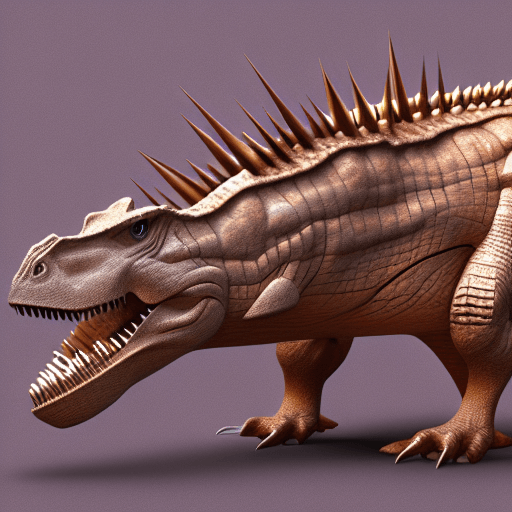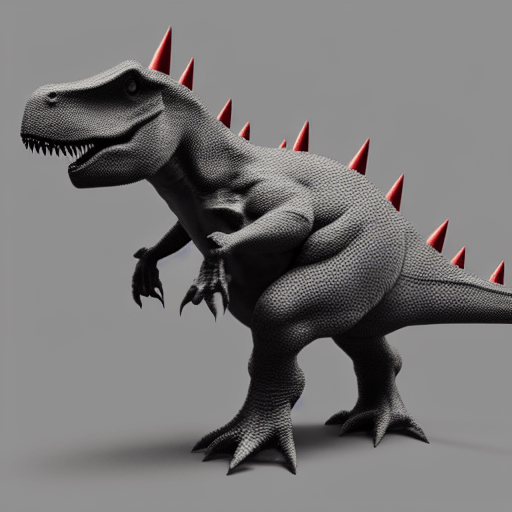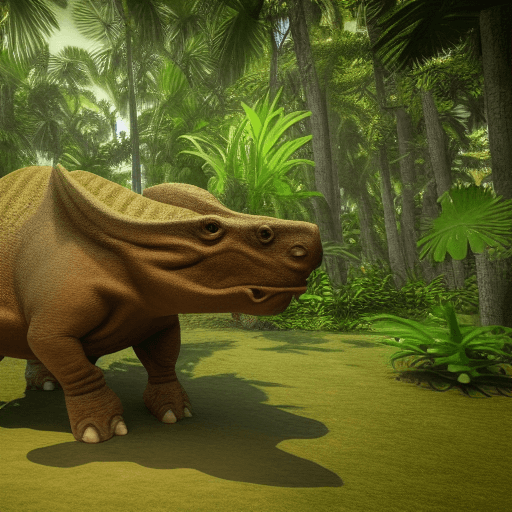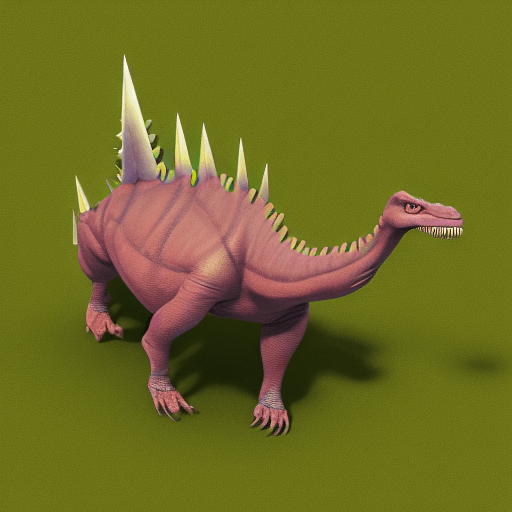List Of Dinosaurs With Spikes On Back
Let’s review a comprehensive list of dinosaurs that had spikes along their spine.
We’ll also provide some interesting facts about each of these prehistoric creatures.

Here is a list of dinosaurs that had spikes on their backs:
1. Ankylosaurus
This dinosaur had two rows of large, pointed plates running down its back, as well as a club-like tail.
2. Stegosaurus
One of the most iconic dinosaurs, the Stegosaurus had large plates on its back which may have been used for protection or to help regulate its body temperature.
3. Triceratops
This well-known dinosaur had three horns on its head and a large frill composed of plate-like scales running down its back.
4. Kentrosaurus
Another spike dinosaur, Kentrosaurushad has sharp spines running along its back, which may have been used for protection against predators.
List of 10 Dinosaurs With Spikes On Their Back
Here is a list of some dinosaurs that had spikes or other prominent protrusions along their backs:
- Stegosaurus – This iconic dinosaur had large triangular plates and spikes along its back and tail.
- Spinosaurus – As the name suggests, it had large neural spines that formed tall “sails” on its back.
- Ouranosaurus – A duck-billed dinosaur with a low, broad sail on its back made of long neural spines.
- Amargasaurus – This sauropod had incredibly tall spines on its neck vertebrae, up to 16 inches long.
- Gastonia – An ankylosaur covered in spikes, it had long spikes off its shoulders.
- Kentrosaurus – Medium-sized stegosaur with pointed plates and spikes on its back and tail.
- Edmontonia – An armored nodosaur with large shoulder spikes and rows of small spikes down its sides.
- Huayangosaurus – A small stegosaur with distinctive raised bony nodules and short spikes.
- Saichania – An ankylosaur with flat scutes and medium-sized shoulder spikes on its armor.
- Polacanthus – One of the earliest armored dinosaurs, it had a row of spikes down its back.
This covers some of the major groups like stegosaurs, ankylosaurs, and sauropods known for dorsal spikes and protrusions. These unique structures may have helped with defense, display, or body temperature regulation.
Dinosaurs with spikes on their backs were a fearsome sight, and they helped to protect the creatures from predators.
Some of the most well-known dinosaurs with spikes on their backs include the triceratops, stegosaurus, and ankylosaurus.
The Triceratops was a huge herbivore that had three horns on its head and a shield of protective spikes along its back.
The stegosaurus was another plant-eating dinosaur that had a row of large plates running down its back, as well as two long spikes at the end of its tail.

The ankylosaurus was a heavily armored dinosaur with spikes all over its body, including a club-like tail that could be used as a weapon.
These are just a few of the many different types of dinosaurs with spikes on their backs.
How did scientists determine which dinosaurs had spikes on their backs?

Scientists have long been interested in the question of which dinosaurs had spikes on their backs, and what purpose they served for those creatures.
One line of evidence that has been used to answer this question is the fossil record.
By studying fossils, scientists have been able to identify a number of different species of dinosaurs that had spikes on their backs.
In addition, the placement and orientation of the spikes can provide insights into their function.
For example, some researchers have suggested that the spikes may have served as a form of self-defense, deterring predators from attacking.
Others have proposed that the spikes may have been used to attract mates or to intimidate rivals.
However, there is still much debate on this topic, and further research is needed to reach a definitive conclusion.
These are just a few of the many interesting prehistoric creatures that roamed the Earth during the Mesozoic Era.
How do you determine if a dinosaur has spikes on its back?
Determining whether or not a dinosaur has spikes on its back can be tricky, as there is often not much fossil evidence to go on.

However, there are a few things that paleontologists look for that can give them clues as to whether or not a particular dinosaur had spikes.
- First, they look at the size and shape of the fossils. If the fossils are long and thin, they may be spike fragments.
- Second, they look at the location of the fossils. If the fossils are clustered together in a line down the middle of the back, they are more likely to spike.
- Finally, they look at the surrounding rocks for evidence of scraping or gouging, which can occur when spikes rub against the ground. By taking all of these factors into account, paleontologists can get a good idea of whether or not a dinosaur had spikes on its back.
What is the significance of spikes on dinosaurs’ backs?
While the spikes on dinosaurs’ backs may look intimidating, they likely had a more practical purpose.

- One theory is that the spikes were used for defense, deterring predators from attacking.
- Another possibility is that the spikes were used for the regulation of body temperature.
- The spikes could have served as a means of heat exchange, helping dinosaurs to stay cool in warm weather and warm in cold weather.
- Additionally, the spikes may have been used for mating displays.
- Male dinosaurs could have used their spikes to impress potential mates, or to intimidate rival males.
Whatever the function of these spikes, they played an important role in the lives of these prehistoric creatures.
What is the significance of having a spike at the back of that particular species?
The significance of having a spike at the back of that particular species is not fully known.
Some say that the spike may be used for self-defense, while others believe that it may help the animal to grip onto branches or leaves.
The spike may also serve as a sexual attractant, signaling to potential mates that the animal is strong and healthy.
Whatever the purpose of the spike, it is clear that it plays an important role in the life of that particular species.
Article Sources
Jacks of Science sources the most authoritative, trustworthy, and highly recognized institutions for our article research. Learn more about our Editorial Teams process and diligence in verifying the accuracy of every article we publish.
